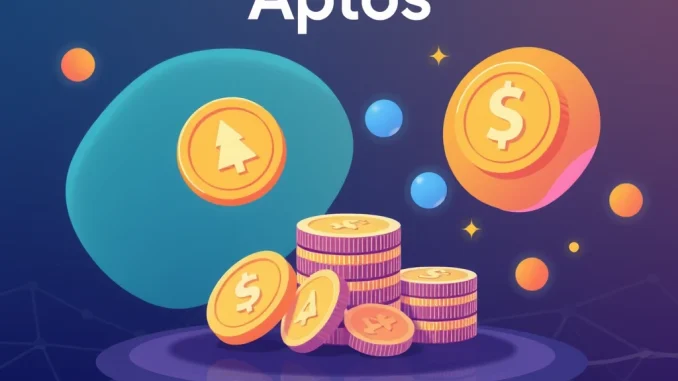
The world of decentralized finance (DeFi) on the Aptos blockchain just got more interesting. Meso Finance, a lending protocol building within the Aptos DeFi ecosystem, has pulled back the curtain on the tokenomics for its native token, MESO. This announcement provides a crucial look into how the project plans to distribute its foundational asset and fuel future growth.
Understanding the MESO Tokenomics
Tokenomics refers to the economics of a cryptocurrency token – how it’s created, distributed, managed, and potentially burned or destroyed. For any DeFi project, clear and well-thought-out tokenomics is vital. It outlines the total supply, the initial allocation strategy, and often includes mechanisms designed to incentivize participation, secure the network, and govern the protocol.
Meso Finance’s unveiling via an X post detailed the core structure of the MESO token. The total supply is fixed at 1 billion MESO tokens. This finite supply is a common model in crypto designed to potentially create scarcity over time, assuming demand grows.
How Will the MESO Crypto Token Distribution Work?
The distribution plan for the 1 billion MESO tokens is broken down into several key categories. This crypto token distribution is designed to align the interests of various stakeholders involved in the Meso Finance ecosystem, from early supporters to future users and the core development team.
Here’s the percentage breakdown:
- Community Incentives (25%): A significant portion dedicated to rewarding users, liquidity providers, and active participants within the protocol. This is key for driving adoption and network effects.
- Marketing (20%): Allocation for promoting the protocol, building partnerships, and expanding reach within the broader DeFi and Aptos communities.
- Team (20%): Tokens allocated to the core team, typically subject to vesting schedules to ensure long-term commitment to the project’s success.
- Foundation (12%): Reserved for the Meso Finance Foundation, likely for ecosystem development, grants, strategic reserves, and future initiatives.
- Seed Investors (10%): Tokens allocated to early backers who provided initial funding for the project. These are also usually subject to vesting.
- Public Sale (5%): A smaller percentage set aside for a public offering, allowing broader participation in acquiring MESO tokens.
- Liquidity (5%): Dedicated to providing initial liquidity on exchanges, making it easier for users to buy and sell MESO tokens.
- Airdrops (3%): A portion reserved for potential future airdrop campaigns, often used to reward early users or attract new ones.
This specific lending protocol token distribution shows a strong emphasis on community growth and marketing, together accounting for 45% of the total supply. This suggests an aggressive strategy for user acquisition and ecosystem building on Aptos.
What Does This Mean for Meso Finance and Aptos DeFi?
The unveiling of MESO tokenomics is a crucial step for Meso Finance. It provides transparency regarding the token supply and how it will enter circulation. For users and potential investors on Aptos, understanding this distribution helps evaluate the project’s potential longevity, decentralization path, and the incentives in place for participation.
The substantial allocation to community incentives highlights Meso Finance’s intent to foster an active user base, which is critical for a lending protocol’s health and security. The allocation for liquidity is also essential for ensuring the token’s accessibility in the market.
Concluding Thoughts on Meso Finance’s Token Plan
Meso Finance’s detailed Meso Finance tokenomics provides a clear roadmap for the MESO token’s journey. With 1 billion tokens and a specific distribution strategy prioritizing community and growth alongside team and investor allocations, the protocol is laying the groundwork for its operation within the competitive Aptos DeFi landscape. As the protocol develops and these tokens begin to circulate according to their respective schedules, the real-world impact of this distribution plan will become clearer.



